Balloon Theodolite Optical Paths
Below are examples of the optical paths used in balloon theodolites.
The Soviet theodolite optical paths are particularly interesting.
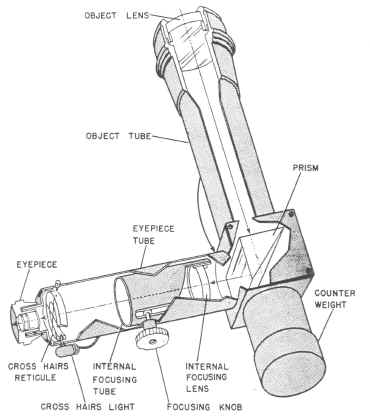 |
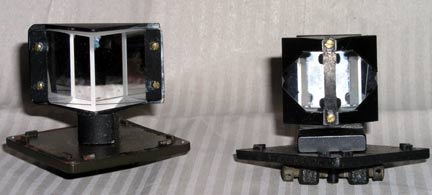 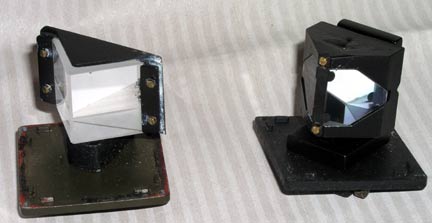 |
| Typical Warren-Knight
Optical Path Also used in the Gurley Aero and others. Not shown in this diagram is the wide angle objective, mirror and switch. These are the same arrangement as used in the Hilger and Watts unit (Below). The optional inverting prism is shown along side the standard prism in the images above right. |
Using the optional inverting prism (above right), images from the main objective will appear upright to the observer. The finder (wide angle) objective image still appears inverted. Re-centering the balloon requires turning the worm drive drums in different directions depending on the objective used. Light transmission abilities are reduced for the inverting prism. |
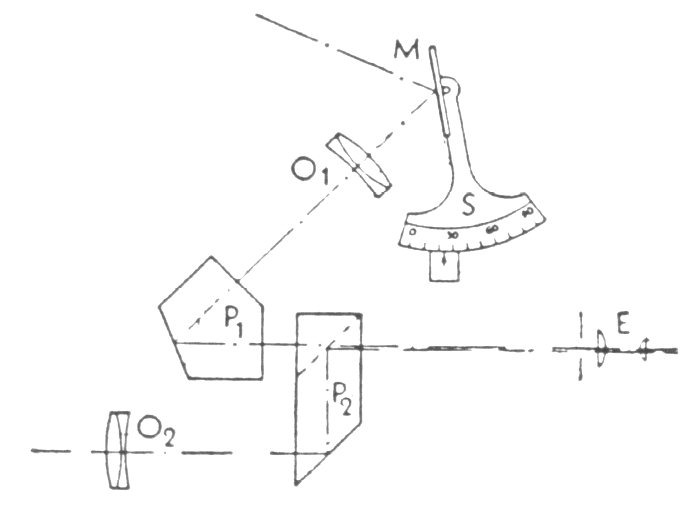 |
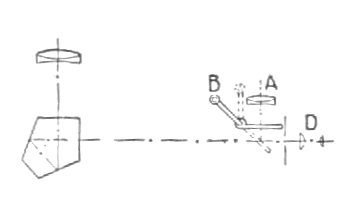 |
| Optical path for the K & E
marine theodolite Horizon objective 02, pentagonal prism P1, sighted horizon objective O1, Indexed mirror M and eyepiece E. Note that this instrument is actually more complicated than this as it has a mirror that exchanges the O2 horizon objective with a bubble horizon when engaged. |
Watts Theodolite Optical Path
Shows 5 sided prism and wide angle mirror control B, eye piece D and wide angle objective A |
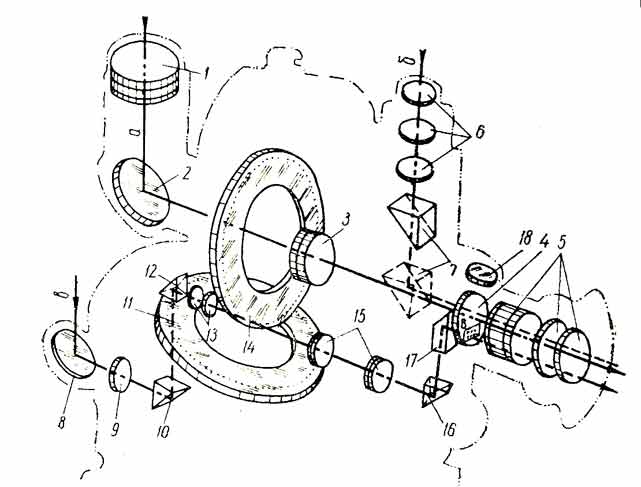 |
| One of the most complex pilot balloon theodolite optical
systems is incorporated in the ATK-2 Soviet
Aerological (balloon) theodolite. The Chinese CFJ-IIB
is similar as is the system employed in the
Warren-knight 90-9528. Main optical path is 1-5.
Finder scope path is 6-7,4-5. Azimuth/Elevation are
superimposed by using path 8-17 and 4-5. (11 and 14 are the glass circles).
Note that a prism is not used in the main optical path in this design (a
mirror at position 2 is used). 18 is the switch for the main and
finder objective. This system allows the operator to view through the azimuth and elevation circles to see their positions superimposed in the view through the eyepiece along with the balloon. |
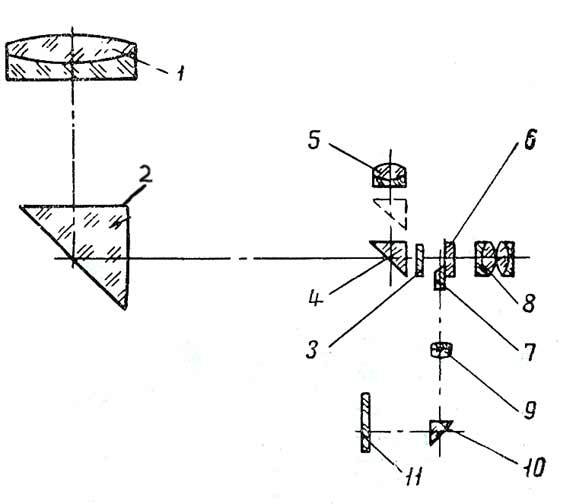 |
| The AWT theodolite optical path is less
complicated than the ATK-2. The AWT uses prisims (2 and 4) in the
main objective as well as the finder scope path. The azimuth and
elevation circles are exposed to ambient light (or illuminated) at
location 11. Reflected light is transmitted through the path 10-9, 7 to the eyepiece
8. Main objective path 1-3,6 and 8. Finder optical path 5, 4,
3, 6, and 8. Prism 4 is switched inside and out of the optical path
to select the main or finder objective. This system allows the operator to view light reflected off the azimuth and elevation circles to see their positions superimposed in the view through the eyepiece along with the balloon. |
